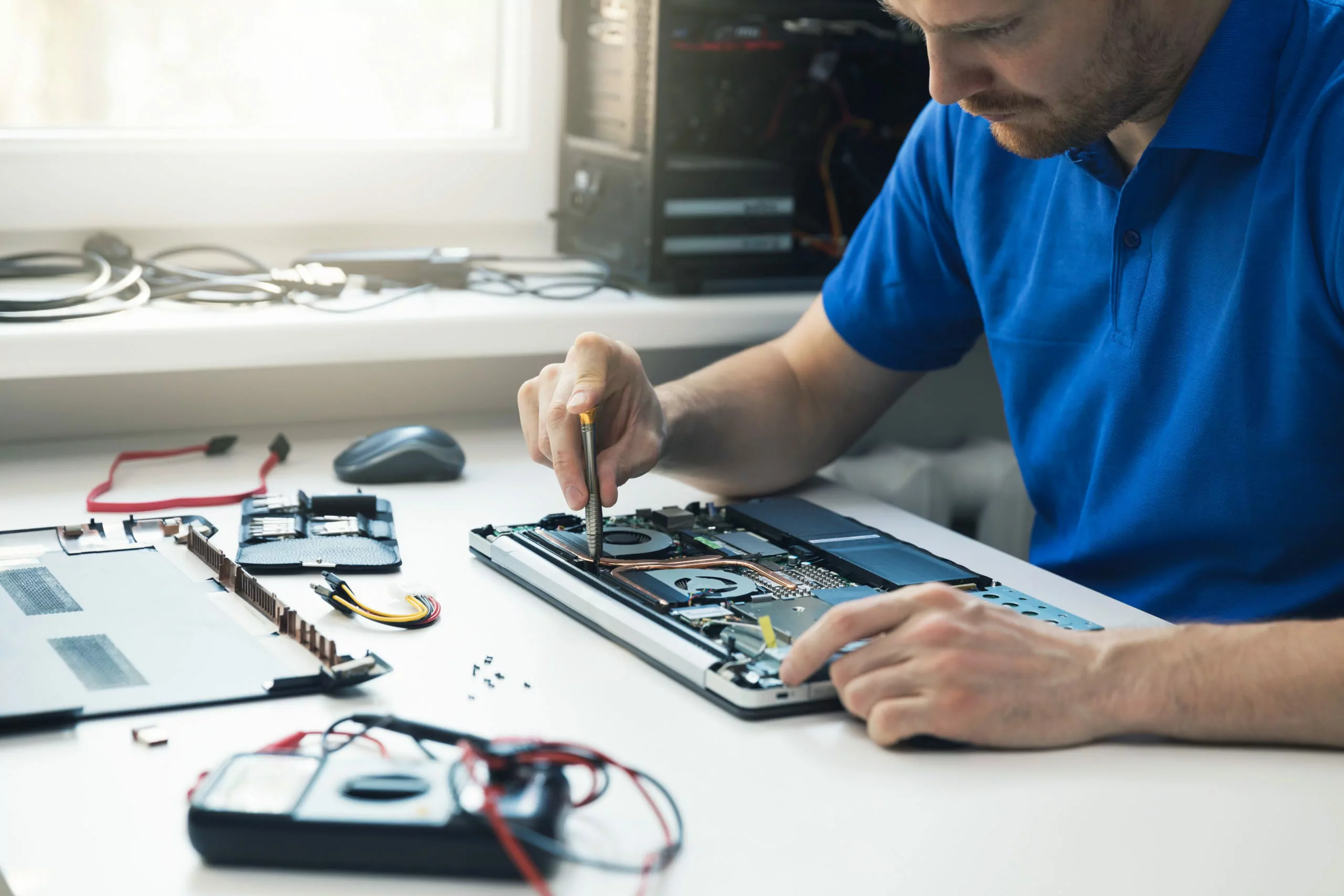In today’s rapidly evolving technological landscape, electronic devices such as smartphones, laptops, and even tractors have become integral to our daily lives. However, when these devices malfunction or break down, manufacturers often make it challenging for consumers to repair them. In response, a growing movement is advocating for the right to repair. Tech With Tech’s Theresa McDonough has become one of those leading voices to emerge, testifying at the FTC’s ‘Nixing the Fix’ workshop in Washington, DC.
Understanding What is the Right to Repair Movement
You may be asking what is the right-to-repair movement exactly. Well, it is a consumer rights initiative that seeks to legally grant consumers and independent repair shops the ability to repair and modify the products they own.
These products encompass a wide range of items, from electronic devices and automobiles to household appliances. The movement counters the increasing trend of manufacturers imposing repair restrictions, such as proprietary screws, software locks, limited access to parts, and repair manuals, to curtail product repairs.

Origins of the Right to Repair Movement
The right-to-repair movement has its origins in the automotive industry, where manufacturers attempted to restrict access to repair information and tools.
In 2012, the Massachusetts legislature passed the first automotive Right to Repair law, requiring manufacturers to provide independent repair shops with the same diagnostic and repair information they offer authorized dealerships.
Since then, the movement has expanded to other industries. Consumer advocates, repair professionals, and independent repair shops are pushing for legislation mandating manufacturers to make repair information and tools more readily accessible.

Aims of the Right-to-Repair Movement
The right-to-repair movement focuses on reshaping the consumer experience within the tech industry. The primary goals of this movement include:
- Providing accessible information: Consumers should have unrestricted access to software updates and diagnostic tools, and be informed about software licenses that limit support, as this may impact their purchasing choices.
- Ensuring the availability of parts and tools: Independent repair shops and individuals should have access to the necessary tools and service devices.
- Legalizing unlocking: Customers should have the legal authority to unlock, modify, and upgrade their devices.
- Promoting repair-friendly design: Manufacturers should create products with ease of repair as a central consideration.
The Necessity of the Right to Repair
Advocates for the Right-to-Repair Act, argue from various perspectives, including sustainability, ethics, and cost-effectiveness.
Consumers often spend exorbitant amounts replacing faulty devices, whereas repairing these devices would be a more cost-effective and environmentally friendly solution. Manufacturers currently hinder repair efforts by refusing to publish repair documentation and using adhesives to secure parts together.
Tech companies like Apple and Samsung have taken commendable steps to make repair tools accessible to third-party technicians and improve the customer experience.
However, there is still a long way to go, as studies show that the average household could save over $400 by repairing products rather than purchasing new ones, amounting to billions of dollars in savings in the U.S. alone.

Positive Impacts of the Right-to-Repair Movement
The right-to-repair movement brings about various advantages, including those with environmental significance. Some of the primary benefits of this movement include:
- Job creation: The right-to-repair movement promotes job growth for independent repair shops and technicians by providing more opportunities in the repair industry.
- Lower prices for consumers: More affordable repair options become available as a result of increased competition, ultimately benefiting the consumers by reducing the financial burden associated with device repairs.
- Environmental sustainability: The right-to-repair movement encourages a culture of repair and reuse, which contributes to reducing electronic waste and conserving resources. By extending the lifespan of electronic devices, the movement helps decrease the environmental impact of manufacturing and disposing of electronic products.
Challenges Posed by Tech Companies
Major tech companies, such as Apple, Microsoft, and Google, have been at the forefront of opposing the Right-to-Repair Act, citing security concerns.
They argue that third-party access to repair and diagnostics could compromise consumer data privacy and lead to data theft, cybercrime, and unauthorized repairs. However, the Federal Trade Commission has refuted these claims.
Becoming an Authorized Repair Provider: Challenges and Limitations
The process for independent repairers to become authorized is not as straightforward as it might seem. To gain access to tools and repair instructions, independent repairers must partner with tech companies and adhere to strict contractual terms and codes to become authorized service centers.
For example, Apple requires independent contractors to maintain records of customer names and product serial numbers and continue sharing this information for two years even after terminating the relationship. This leaves many small shops feeling that the benefits really don’t outweigh the hassle and risks.

Global Right-to-Repair Activism and Tech With Tech’s Contributions
Countries like Canada, the UK, the US, the European Union, Australia, France, and India have made varying degrees of progress on the right-to-repair front. Legislation in these countries ranges from providing access to spare parts for electrical appliances to mandating repairability scores on consumer goods.
Tech With Tech’s Theresa McDonough has utilized her expertise and knowledge to advocate for increased access to repair information and tools.
Her testimony at the state house in Montpelier Vermont, and subsequent interviews on Vermont Public Radio, caught the attention of the US Federal Trade Commission (FTC), which invited her to testify at their ‘Nixing the Fix’ workshop in Washington, DC in July 2019
Following her testimony, CBS Sunday Morning interviewed McDonough, and an episode aired on October 11, 2020, discussing the Right-to-Repair movement and Apple’s independent repair program. Her expertise and knowledge played a significant role in Apple’s decision to release the program after hearing her testimony at the FTC.
In addition to advocacy work, Tech With Tech supports the Senates Digital Fair Repair Act, introduced in March 2022. This would require manufacturers to make diagnostic, maintenance, and repair equipment available to independent repair providers and owners.
Tech With Tech also promotes consumer choice and competition in the repair industry by encouraging enforcement of provisions by the Federal Trade Commission and state attorneys general.
To conclude
The right-to-repair movement is a crucial initiative aimed at promoting consumer choice and competition in the repair industry. As a key figure in the fight, Theresa McDonough has utilized her expertise and knowledge to advocate for increased access to repair information and tools. Her efforts have contributed to significant changes in the industry, such as Apple’s launch of the Independent Repair Program.
The right-to-repair movement seeks to grant consumers and independent repair shops the legal ability to repair and modify their own products. Prominent advocates, such as Theresa McDonough are pushing for greater access to repair tools and information.
The movement aims to create job opportunities, provide more affordable repair options for consumers, and promote environmental sustainability by reducing electronic waste.
Despite opposition from big tech companies, the efforts of advocates have already brought about significant changes in the industry. Ultimately, the right-to-repair movement is about empowering consumers, promoting competition, and ensuring that people have more control over their devices.

